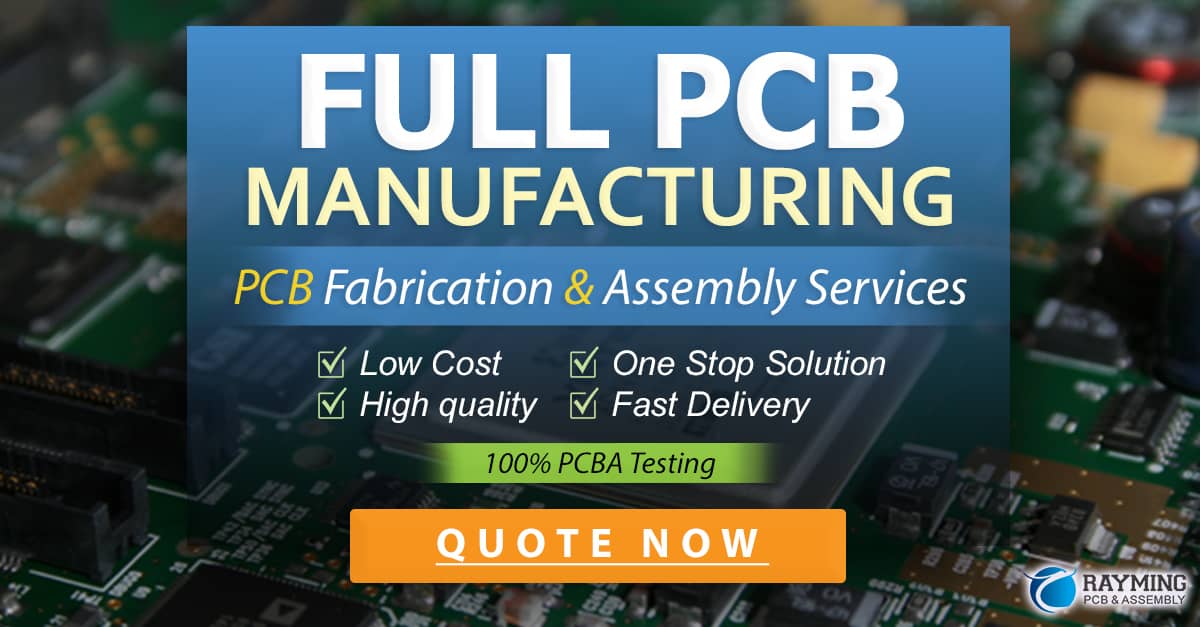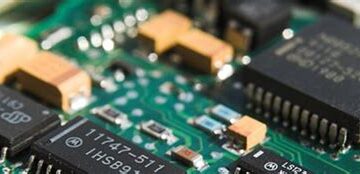1. Increased Adoption of Industry 4.0 Technologies
Industry 4.0, also known as the Fourth Industrial Revolution, is transforming the electronics manufacturing sector. The integration of advanced technologies such as artificial intelligence (AI), the Internet of Things (IoT), robotics, and big data analytics is enhancing productivity, efficiency, and quality control in manufacturing processes.
1.1 Artificial Intelligence (AI) in Manufacturing
AI is being leveraged in various aspects of electronics manufacturing, from predictive maintenance to quality inspection. Machine learning algorithms can analyze vast amounts of data generated by sensors and machines to predict potential equipment failures, optimize production schedules, and improve overall equipment effectiveness (OEE).
1.2 Internet of Things (IoT) in Manufacturing
IoT devices and sensors are being deployed throughout the manufacturing floor to collect real-time data on machine performance, production processes, and inventory levels. This data can be used to monitor and control operations remotely, enable predictive maintenance, and optimize supply chain management.
1.3 Robotics and Automation
The use of robotics and automation is becoming increasingly prevalent in electronics manufacturing. Collaborative robots (cobots) are working alongside human workers to perform repetitive and precise tasks, such as assembly, soldering, and testing. This not only improves productivity but also reduces the risk of human error and enhances worker safety.
| Technology | Benefits in Electronics Manufacturing |
|---|---|
| AI | Predictive maintenance, quality inspection, production optimization |
| IoT | Real-time data collection, remote monitoring, supply chain optimization |
| Robotics | Increased productivity, precision, worker safety |
2. Sustainable and Eco-Friendly Manufacturing Practices
As environmental concerns continue to grow, the electronics manufacturing industry is shifting towards more sustainable and eco-friendly practices. Companies are focusing on reducing their carbon footprint, minimizing waste, and implementing circular economy principles.
2.1 Energy-Efficient Manufacturing Processes
Manufacturers are adopting energy-efficient technologies and processes to reduce their energy consumption and associated costs. This includes the use of renewable energy sources, such as solar and wind power, as well as implementing energy management systems to optimize energy usage.
2.2 Waste Reduction and Recycling
The electronics industry generates a significant amount of electronic waste (e-waste), which can have negative environmental impacts if not properly managed. Manufacturers are implementing waste reduction strategies, such as designing products for disassembly and recyclability, and establishing e-waste recycling programs to recover valuable materials and minimize the amount of waste sent to landfills.
2.3 Circular Economy Principles
The circular economy model focuses on keeping resources in use for as long as possible, minimizing waste, and regenerating natural systems. Electronics manufacturers are embracing circular economy principles by designing products for durability, repairability, and upgradability, as well as exploring opportunities for product-as-a-service models and closed-loop supply chains.
| Sustainable Practice | Benefits |
|---|---|
| Energy-Efficient Manufacturing | Reduced energy consumption and costs, lower carbon footprint |
| Waste Reduction and Recycling | Minimized e-waste, recovery of valuable materials, environmental protection |
| Circular Economy Principles | Extended product life, reduced resource consumption, closed-loop supply chains |
3. Miniaturization and Advanced Packaging Technologies
The demand for smaller, more powerful, and multi-functional electronic devices is driving the trend towards miniaturization and advanced packaging technologies in electronics manufacturing.
3.1 System-on-Chip (SoC) and System-in-Package (SiP)
System-on-Chip (SoC) and System-in-Package (SiP) technologies are enabling the integration of multiple functions onto a single chip or package, respectively. This allows for smaller form factors, improved performance, and reduced power consumption in electronic devices.
3.2 3D Packaging and Through-Silicon Via (TSV)
3D packaging technologies, such as Through-Silicon Via (TSV), enable the vertical stacking of multiple chips or wafers, creating high-density, compact packages. This approach offers benefits such as reduced package size, improved electrical performance, and enhanced thermal management.
3.3 Advanced Materials and Substrates
The development of advanced materials and substrates is crucial for enabling miniaturization and high-performance packaging. Materials such as low-k dielectrics, high-density interconnects (HDI), and advanced substrates like silicon interposers and fan-out wafer-level packaging (FOWLP) are being utilized to meet the demanding requirements of modern electronic devices.
| Packaging Technology | Benefits |
|---|---|
| SoC and SiP | Smaller form factors, improved performance, reduced power consumption |
| 3D Packaging and TSV | Reduced package size, improved electrical performance, enhanced thermal management |
| Advanced Materials and Substrates | Enabling miniaturization, high-density interconnects, improved performance |

4. 5G and High-Speed Connectivity
The rollout of 5G networks and the increasing demand for high-speed connectivity are driving innovations in electronics manufacturing.
4.1 5G Infrastructure and Devices
The deployment of 5G networks requires the manufacturing of new infrastructure components, such as base stations, antennas, and small cells. Additionally, the production of 5G-enabled devices, including smartphones, tablets, and IoT devices, is ramping up to meet consumer demand.
4.2 High-Frequency and mmWave Components
5G networks operate at higher frequencies, including millimeter-wave (mmWave) bands, which require the development and manufacturing of specialized components. These include high-frequency antennas, filters, amplifiers, and integrated circuits (ICs) that can handle the demands of 5G communications.
4.3 Printed Circuit Board (PCB) Advancements
The increased complexity and high-speed requirements of 5G devices are driving advancements in PCB manufacturing. This includes the use of high-density interconnect (HDI) PCBs, advanced materials like low-loss dielectrics, and enhanced manufacturing processes to ensure signal integrity and minimize interference.
| 5G Component | Manufacturing Considerations |
|---|---|
| Infrastructure (base stations, antennas) | High-volume production, ruggedized design for outdoor deployment |
| Devices (smartphones, tablets, IoT) | Miniaturization, integration of 5G modems and antennas |
| High-Frequency and mmWave Components | Specialized manufacturing processes, tight tolerances, materials with low dielectric loss |
| PCBs | HDI technologies, advanced materials, enhanced manufacturing processes for signal integrity |
5. Supply Chain Resilience and Localization
The COVID-19 pandemic has highlighted the importance of supply chain resilience and the need for localization in electronics manufacturing.
5.1 Diversification of Supply Sources
To mitigate the risks associated with supply chain disruptions, electronics manufacturers are diversifying their supply sources. This involves establishing relationships with multiple suppliers across different geographic regions to ensure a steady supply of raw materials, components, and sub-assemblies.
5.2 Nearshoring and Reshoring
There is a growing trend towards nearshoring and reshoring in electronics manufacturing. Companies are moving their production facilities closer to their end markets to reduce reliance on long-distance supply chains and minimize the impact of global disruptions. This also allows for faster response times to changing market demands and reduces transportation costs.
5.3 Inventory Management and Visibility
Effective inventory management and visibility are critical for maintaining supply chain resilience. Manufacturers are investing in digital technologies, such as IoT sensors, RFID tags, and blockchain, to track and trace inventory across the supply chain in real-time. This enables better decision-making, optimizes inventory levels, and reduces the risk of stockouts or excess inventory.
| Supply Chain Strategy | Benefits |
|---|---|
| Diversification of Supply Sources | Reduced risk of supply disruptions, increased flexibility |
| Nearshoring and Reshoring | Faster response times, reduced transportation costs, improved supply chain resilience |
| Inventory Management and Visibility | Real-time tracking, optimized inventory levels, reduced risk of stockouts or excess inventory |
6. Skilled Workforce Development
As the electronics manufacturing industry becomes more technologically advanced, there is a growing need for a skilled workforce to support the adoption of new technologies and processes.
6.1 Talent Attraction and Retention
Electronics manufacturers are focusing on attracting and retaining skilled talent, particularly in areas such as software development, data analytics, and robotics. This involves offering competitive compensation packages, providing opportunities for professional development, and fostering a positive work culture.
6.2 Upskilling and Reskilling Programs
To address the skills gap, manufacturers are investing in upskilling and reskilling programs for their existing workforce. This includes providing training in emerging technologies, such as AI, IoT, and automation, to ensure that employees have the necessary skills to adapt to the changing manufacturing landscape.
6.3 Collaboration with Educational Institutions
Electronics manufacturers are collaborating with educational institutions to develop curriculums and programs that align with the industry’s evolving needs. This includes partnering with universities and vocational schools to offer internships, apprenticeships, and co-op programs that provide students with hands-on experience and prepare them for careers in electronics manufacturing.
| Workforce Development Strategy | Benefits |
|---|---|
| Talent Attraction and Retention | Access to skilled talent, reduced turnover, improved productivity |
| Upskilling and Reskilling Programs | Adaptable workforce, increased job satisfaction, improved productivity |
| Collaboration with Educational Institutions | Pipeline of skilled talent, industry-relevant training, enhanced innovation |
7. Cybersecurity and Data Protection
As the electronics manufacturing industry becomes more digitized and connected, the importance of cybersecurity and data protection is increasingly recognized.
7.1 Secure Manufacturing Processes
Manufacturers are implementing secure manufacturing processes to protect their intellectual property, product designs, and sensitive data from cyber threats. This includes the use of encryption, access controls, and secure communication protocols to safeguard data throughout the manufacturing lifecycle.
7.2 Supply Chain Cybersecurity
Ensuring cybersecurity across the supply chain is crucial for electronics manufacturers. This involves working closely with suppliers to establish secure data exchange mechanisms, conducting regular security audits, and implementing secure authentication and authorization processes.
7.3 Employee Awareness and Training
Raising employee awareness about cybersecurity risks and providing regular training on best practices is essential for maintaining a secure manufacturing environment. This includes educating employees on how to identify and report potential security threats, as well as following secure data handling and access protocols.
| Cybersecurity Measure | Benefits |
|---|---|
| Secure Manufacturing Processes | Protection of intellectual property, product designs, and sensitive data |
| Supply Chain Cybersecurity | Secure data exchange, reduced risk of supply chain cyber threats |
| Employee Awareness and Training | Improved cybersecurity culture, reduced risk of human error or insider threats |
8. Additive Manufacturing (3D Printing)
Additive manufacturing, also known as 3D printing, is gaining traction in the electronics manufacturing industry for prototyping, low-volume production, and customized parts.
8.1 Rapid Prototyping and Tooling
3D printing enables rapid prototyping of electronic components and assemblies, allowing manufacturers to iterate and test designs quickly and cost-effectively. It also streamlines the production of custom tooling and fixtures, reducing lead times and costs compared to traditional manufacturing methods.
8.2 Customization and Personalization
Additive manufacturing enables the production of highly customized and personalized electronic devices. This opens up new opportunities for manufacturers to offer unique and tailored products to meet specific customer requirements.
8.3 Material Advancements
The development of advanced materials for 3D printing, such as conductive and insulating polymers, is expanding the applications of additive manufacturing in electronics. These materials enable the printing of functional electronic components, such as antennas, sensors, and circuits, directly onto 3D-printed structures.
| Additive Manufacturing Application | Benefits |
|---|---|
| Rapid Prototyping and Tooling | Faster design iterations, reduced lead times and costs |
| Customization and Personalization | Unique and tailored products, enhanced customer satisfaction |
| Material Advancements | Expanded applications, functional electronic components, integrated structures |
Frequently Asked Questions (FAQ)
-
Q: How will Industry 4.0 technologies impact the electronics manufacturing industry?
A: Industry 4.0 technologies, such as AI, IoT, and robotics, will enhance productivity, efficiency, and quality control in electronics manufacturing processes. These technologies enable predictive maintenance, real-time monitoring, and automation, leading to improved overall equipment effectiveness and reduced costs. -
Q: What are the benefits of sustainable and eco-friendly manufacturing practices in electronics?
A: Sustainable and eco-friendly manufacturing practices offer several benefits, including reduced energy consumption and costs, minimized e-waste, recovery of valuable materials, and environmental protection. By adopting circular economy principles, manufacturers can extend product life, reduce resource consumption, and establish closed-loop supply chains. -
Q: How are miniaturization and advanced packaging technologies shaping the electronics industry?
A: Miniaturization and advanced packaging technologies, such as SoC, SiP, and 3D packaging, enable the production of smaller, more powerful, and multi-functional electronic devices. These technologies offer benefits such as improved performance, reduced power consumption, and enhanced thermal management. -
Q: What impact will 5G and high-speed connectivity have on electronics manufacturing?
A: The rollout of 5G networks and the demand for high-speed connectivity are driving innovations in electronics manufacturing. This includes the production of 5G infrastructure components, 5G-enabled devices, high-frequency and mmWave components, and advancements in PCB manufacturing to ensure signal integrity and minimize interference. -
Q: How can electronics manufacturers address the skills gap in the industry?
A: Electronics manufacturers can address the skills gap by focusing on talent attraction and retention, implementing upskilling and reskilling programs for their existing workforce, and collaborating with educational institutions to develop industry-relevant curriculums and training programs. These strategies help ensure a pipeline of skilled talent and improve workforce adaptability to the changing manufacturing landscape.
Conclusion
The electronics manufacturing industry is undergoing significant transformations, driven by technological advancements, changing consumer demands, and global market dynamics. The top 8 trends and predictions for 2024 and beyond include the increased adoption of Industry 4.0 technologies, sustainable and eco-friendly manufacturing practices, miniaturization and advanced packaging technologies, 5G and high-speed connectivity, supply chain resilience and localization, skilled workforce development, cybersecurity and data protection, and additive manufacturing.
By embracing these trends and adapting to the evolving landscape, electronics manufacturers can position themselves for success in the years to come. Investing in advanced technologies, sustainable practices, and a skilled workforce will be crucial for driving innovation, improving efficiency, and meeting the ever-changing needs of the market.
As the electronics manufacturing industry continues to evolve, it is essential for companies to stay informed about the latest trends, adopt best practices, and collaborate with industry partners to navigate the challenges and opportunities that lie ahead. By doing so, they can remain competitive, deliver high-quality products, and contribute to the growth and advancement of the electronics manufacturing sector.



0 Comments